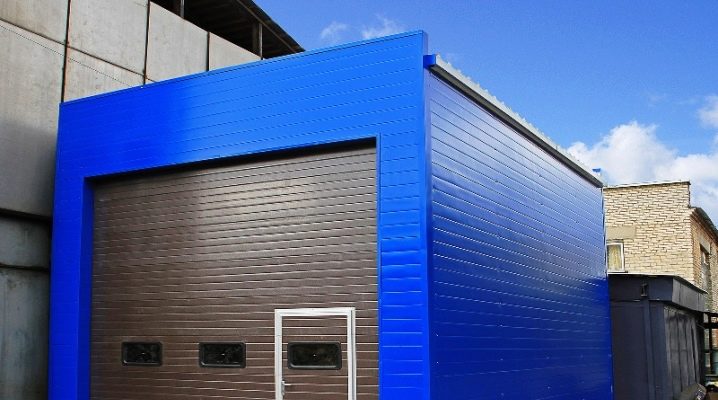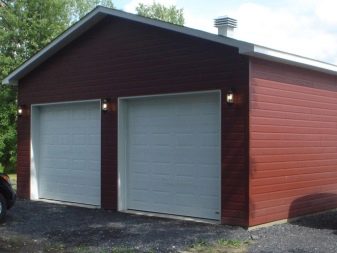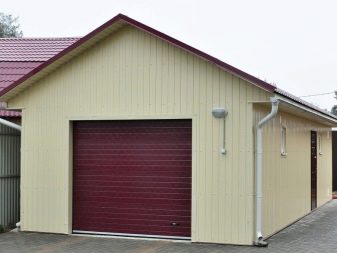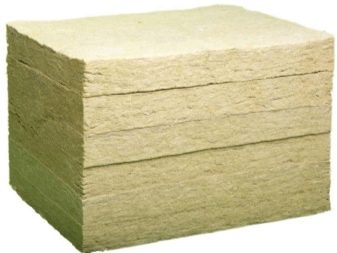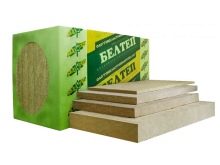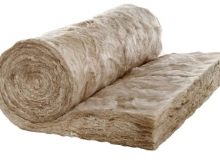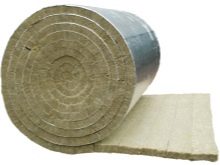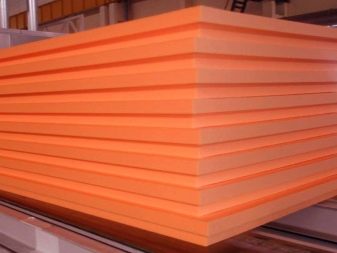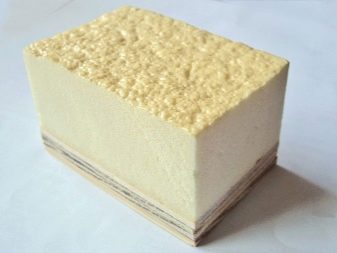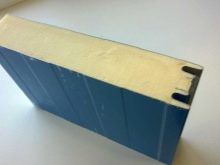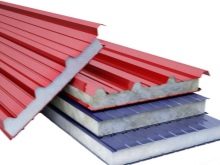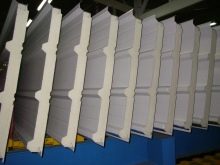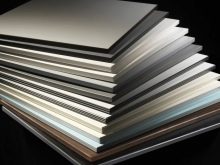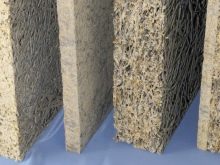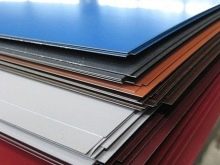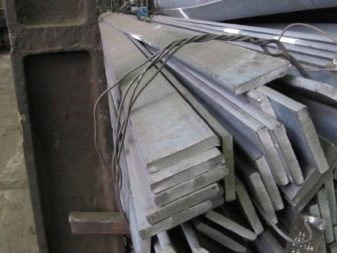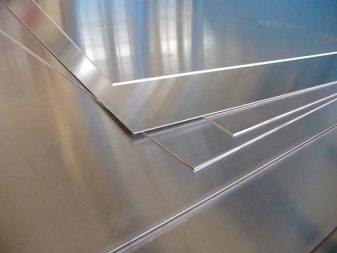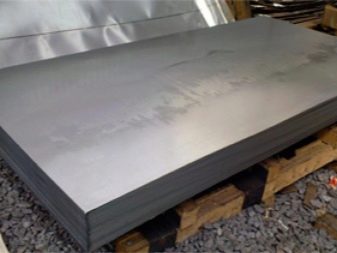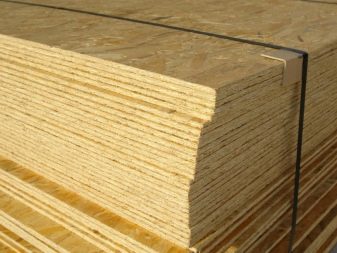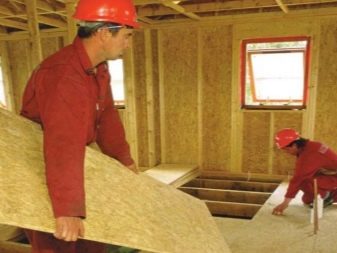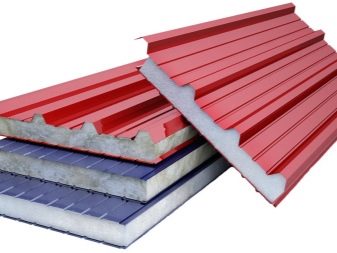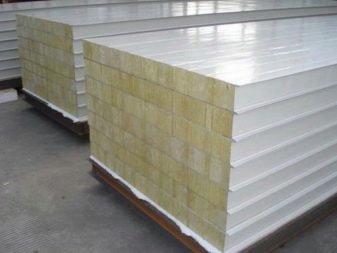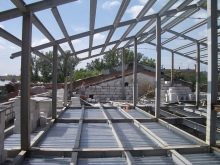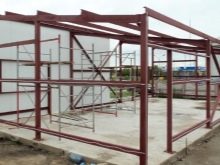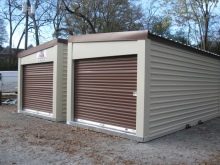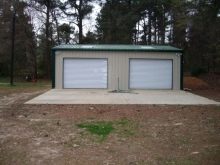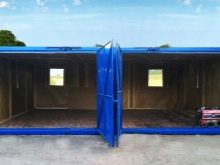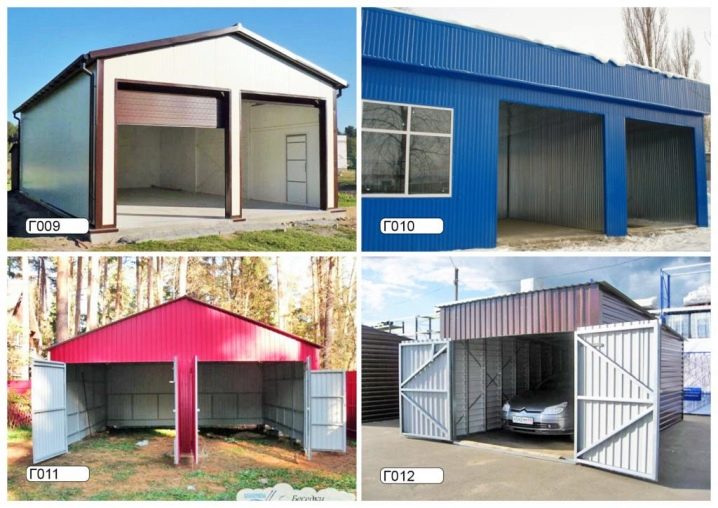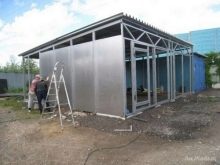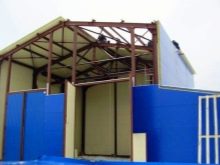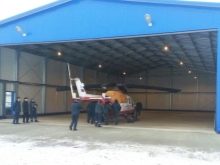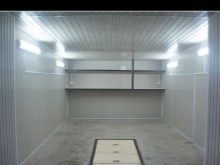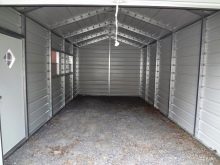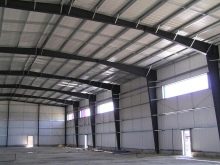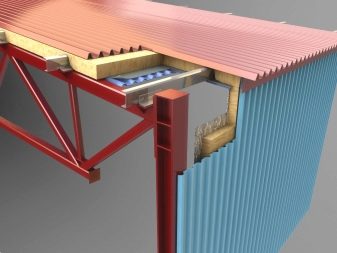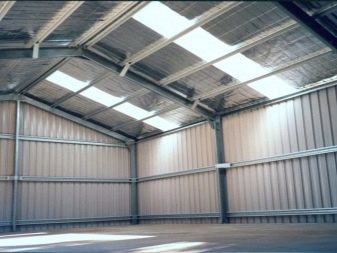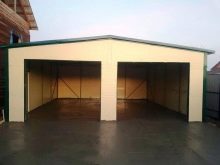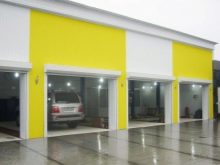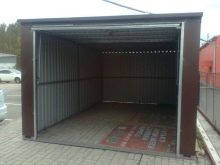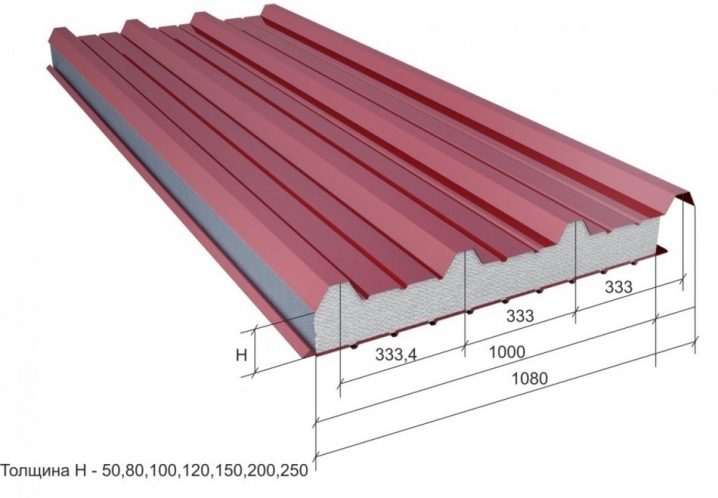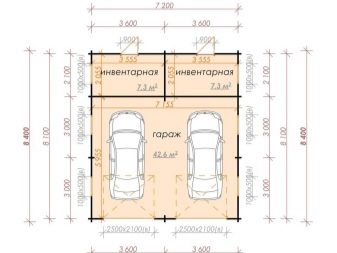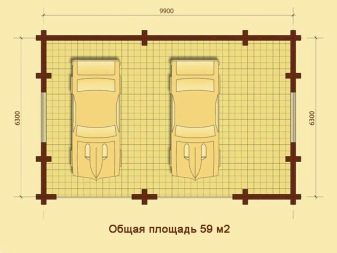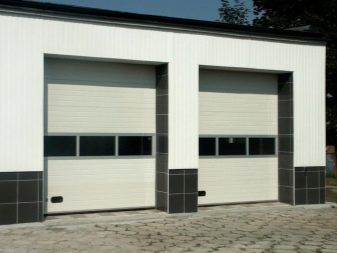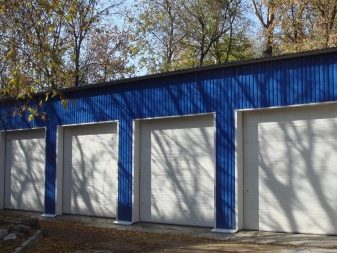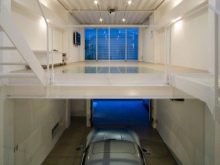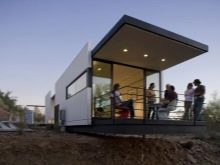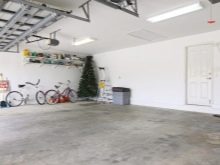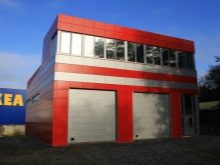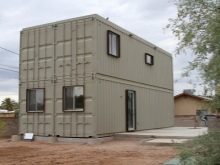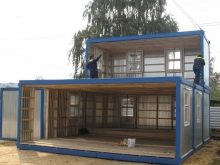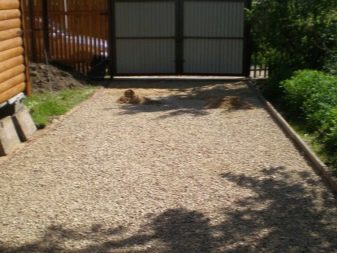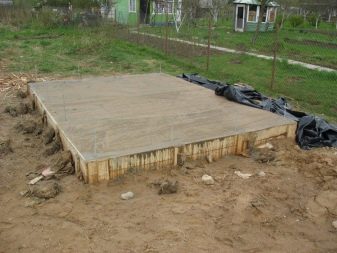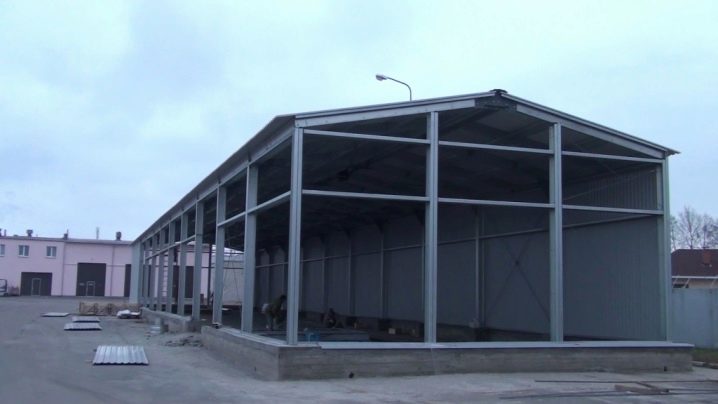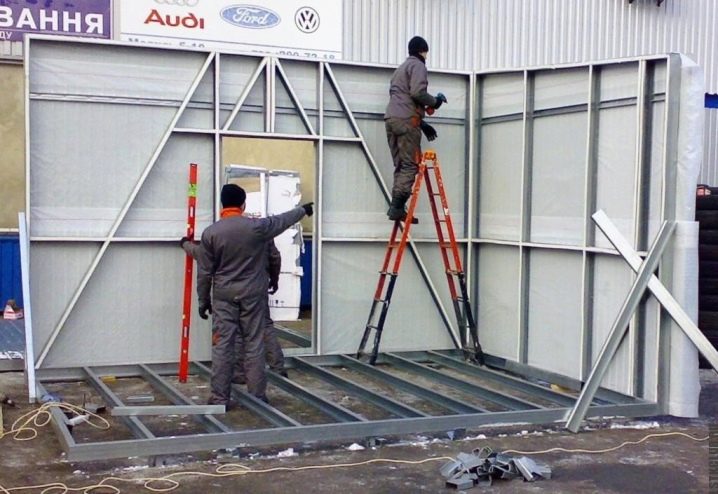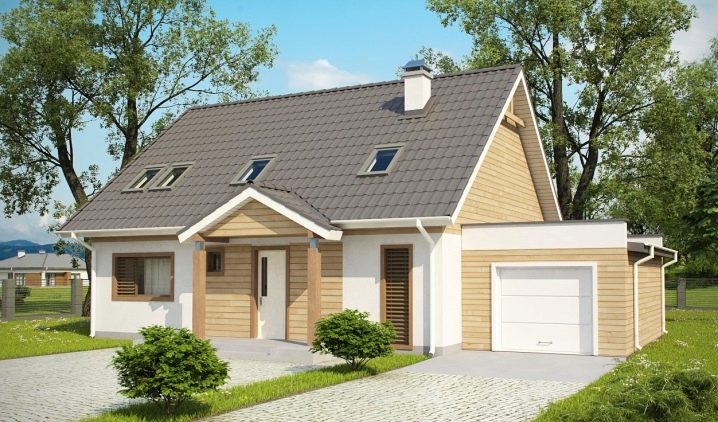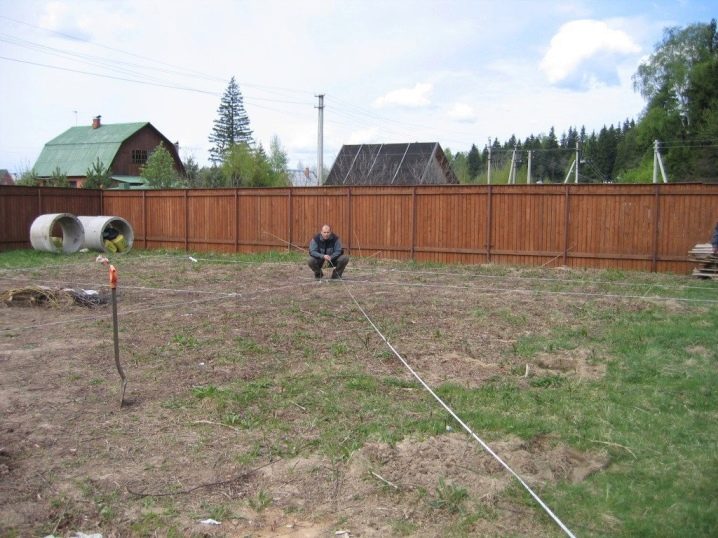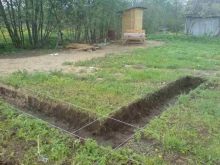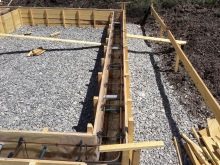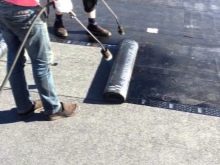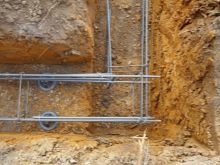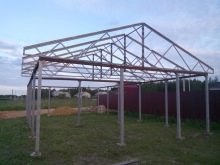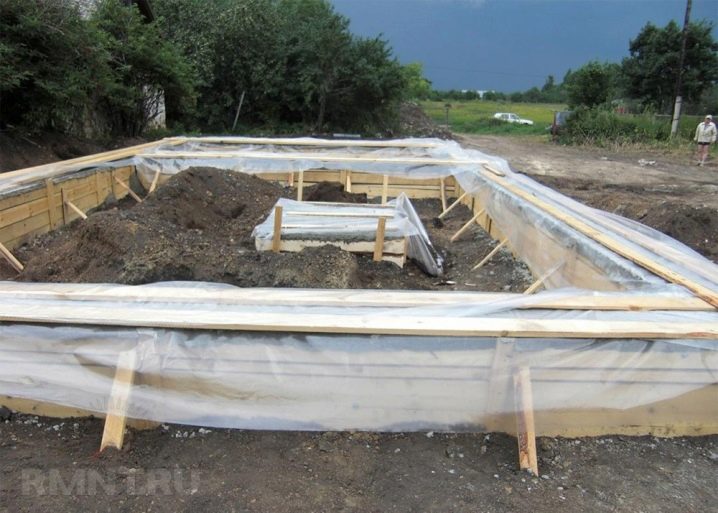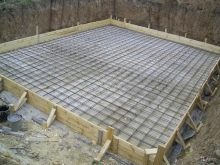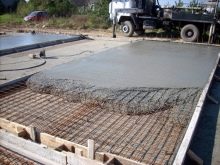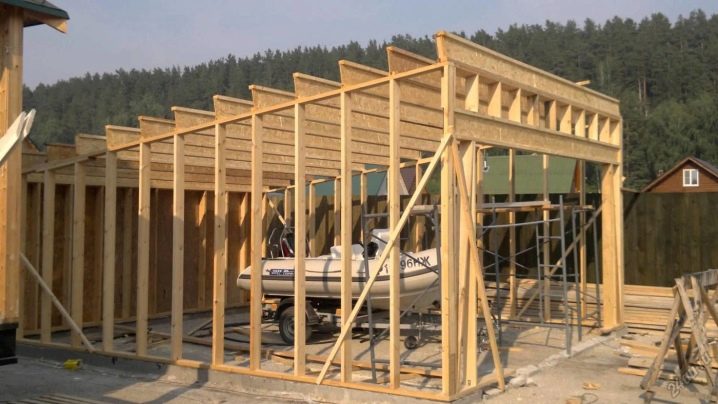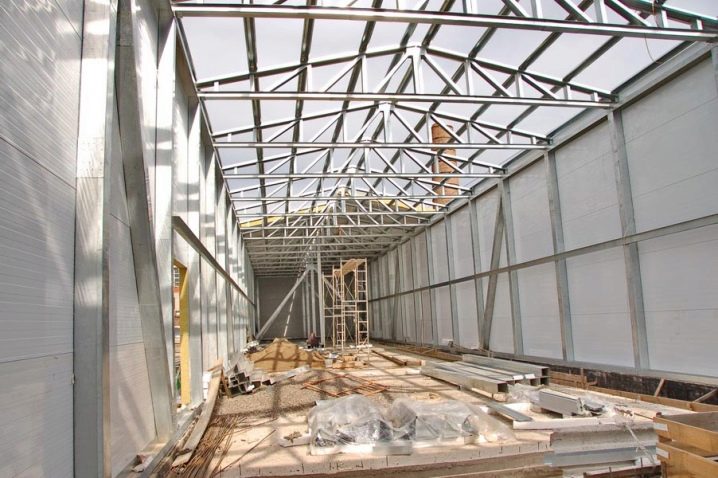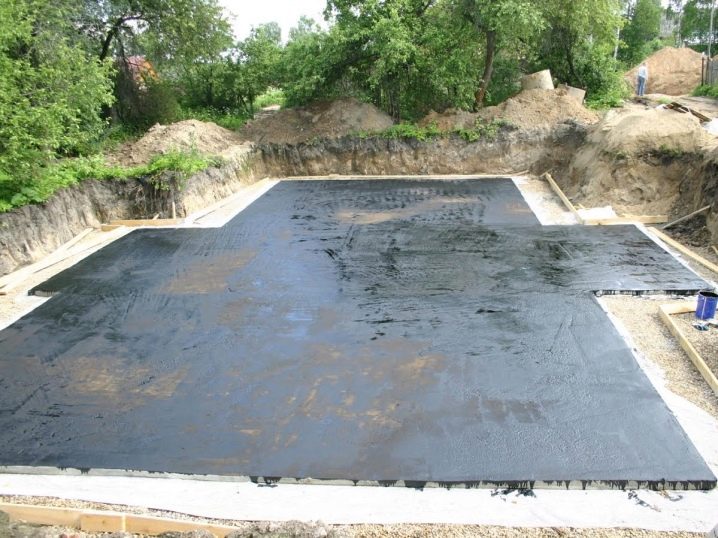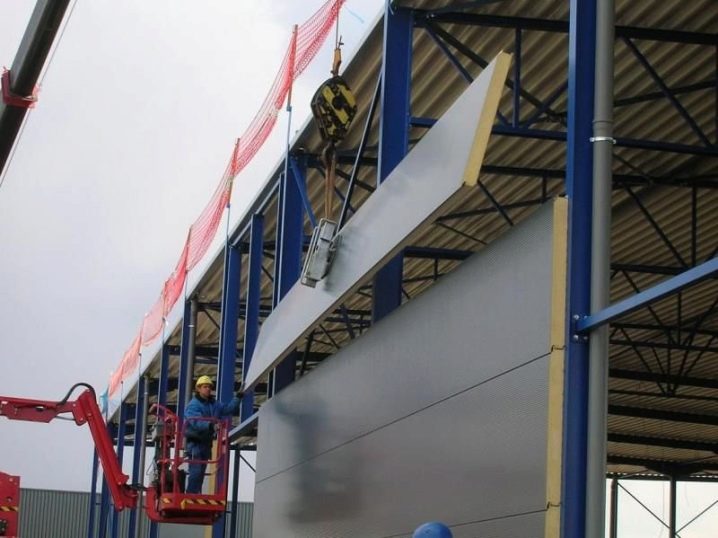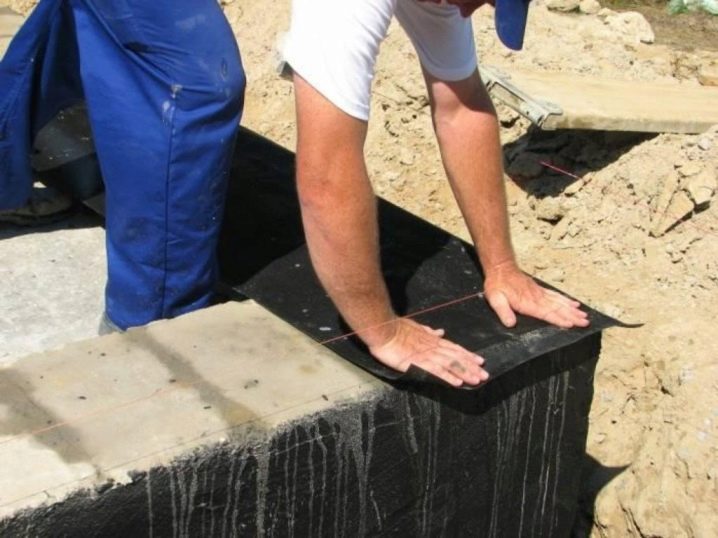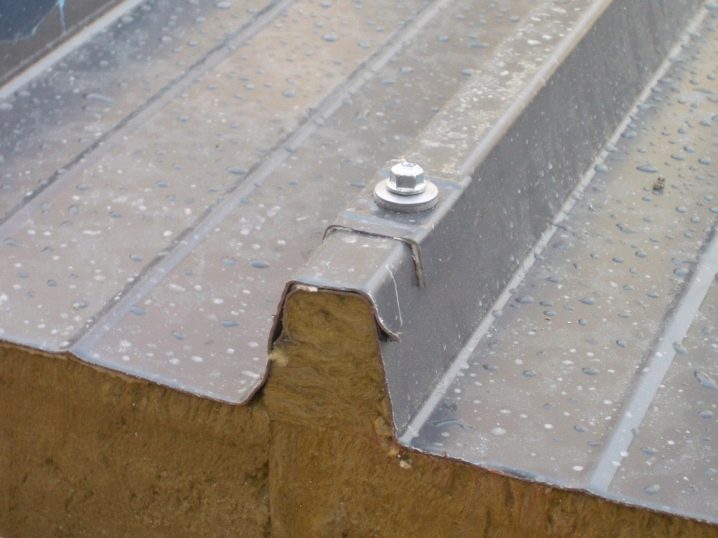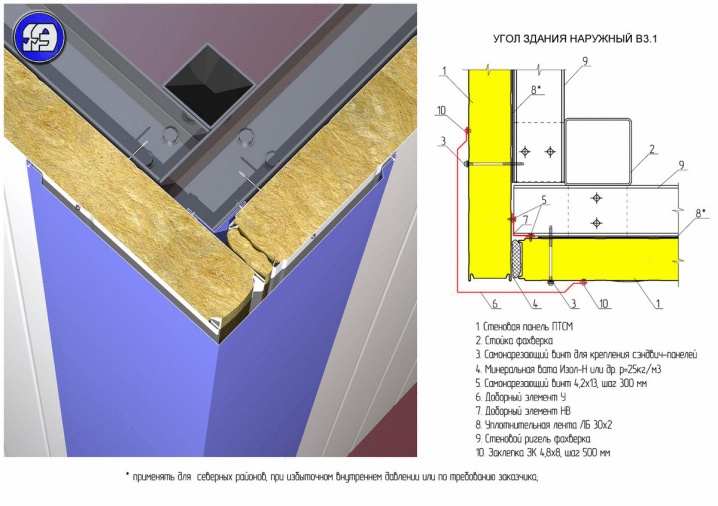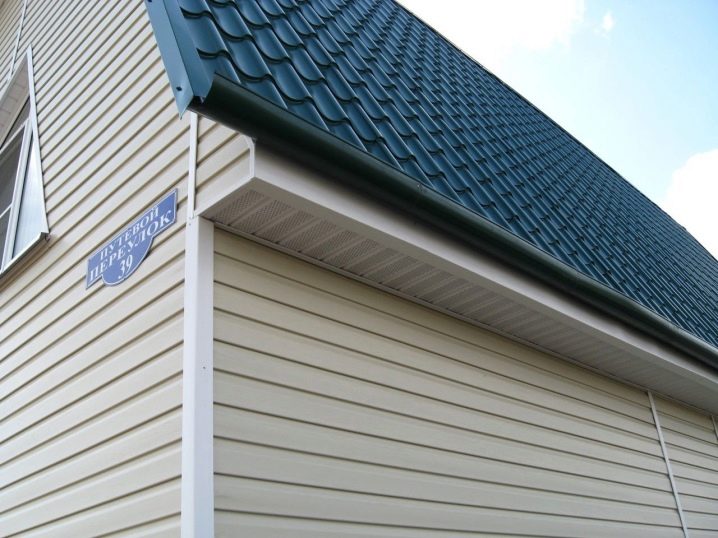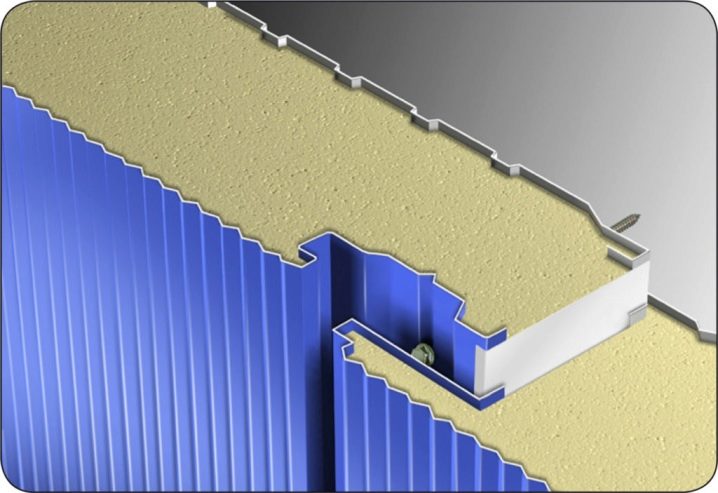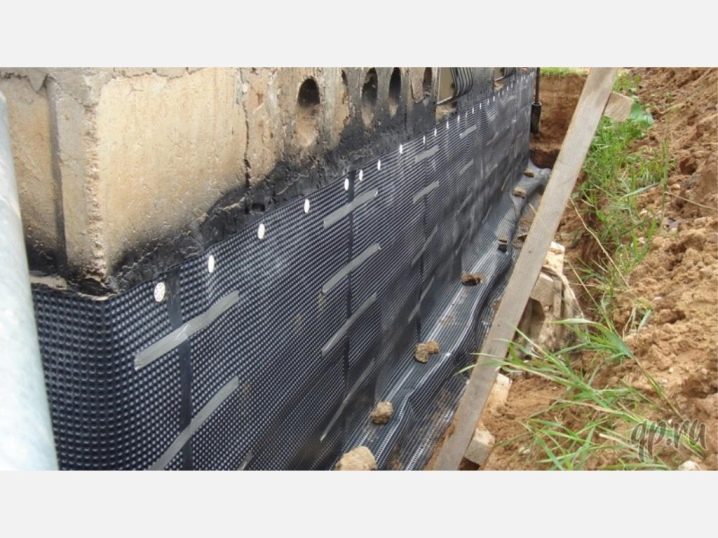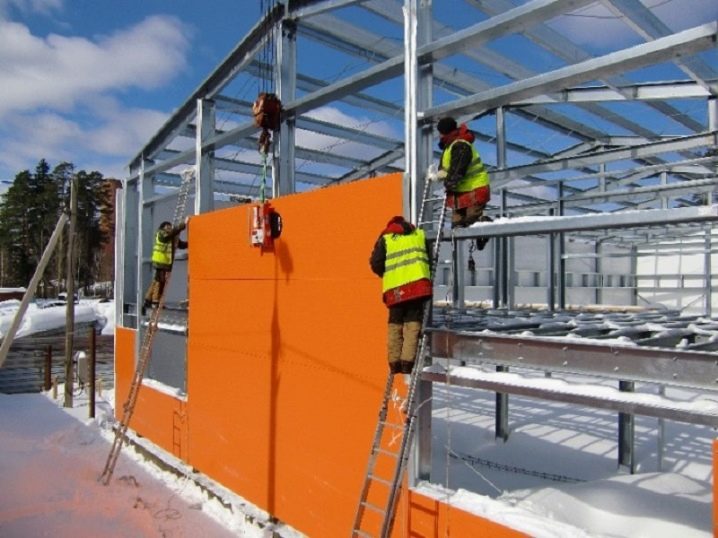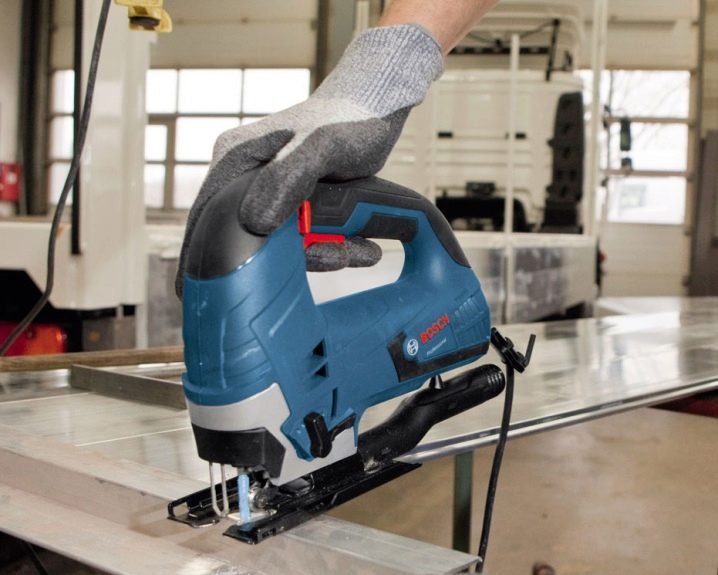Sandwich panel garages: advantages and disadvantages
The once-current prefab metal garage has become a relic of the past. Today, advanced technologies for the construction of garage structures and innovative building materials make it possible to build durable, durable, aesthetically pleasing and affordable autoboxes that meet modern quality and safety requirements. One of such materials became polyurethane foam sandwich panels, which have construction readiness in combination with high performance properties, which explains the steady interest of commercial and individual construction market participants in them.
Among the existing design options, a garage of this multi-layered modern material, assembled according to a modular principle, is considered to be a far more profitable solution than a traditional block or brick building.It is relatively easy to install, there is no need to additionally insulate or trim inside and outside. In our article we will find out the positive and negative sides of a sandwich garage box, dwell on the necessary technological operations for its assembly and share useful tips from experienced craftsmen.
Special features
The sandwich panel owes its original name to a peculiar three-layer structure, which is associated with the American sandwich variety of sandwich.
The most common design solution of modular building material is presented:
- Two painted or galvanized steel profiled sheets that perform reinforcing and protective functions.
- The core is a heat-insulating layer of mineral wool, fiberglass, polyurethane foam, self-extinguishing foam polystyrene foam, which has flame retardants or polyisocyanurate foam.
In some cases, the outer skin from the insulating layer is separated by a special film, which is characterized by a membrane structure and one-sided internal permeability.It protects the insulation from external factors and prevents the accumulation of condensate in the spring-summer season.
For the manufacture of sandwich panels, the layers listed are glued to each other on high-precision press equipment under normal or high temperature conditions. The result is an excellent tool with a wide range of applications in construction and decoration.
Heaters
Any prefabricated garages of sandwich panels - objects of increased fire risk. For this reason, when buying them, it is so important to ask what insulation is used in them. The best type of insulation is mineral wool. It is durable, fire resistant and environmentally friendly, since even under conditions of high temperature conditions it eliminates the release of toxins that are harmful to the environment and dangerous to human health.
The service life of polyurethane and polystyrene foam is shorter than that of mineral wool. Their compliance with the rules of fire safety is due to the use in the production of raw materials with the addition of flame retardant impregnations that contribute to the self-extinguishing of the insulation material.But the polymer insulation have excellent, almost 100% waterproof. Whereas hygroscopic mineral wool has to be well protected from moisture. You should know that polymers emit toxins during combustion.
As for polyisocyanurate foam, this innovative heat insulator has all the advantages of basalt fiber (mineral wool) and polymer fillers, but it does not have their minuses. For the purchase of such panels will have to pay 1.5 times more.
Exterior trim
Coverage "sandwiches" is completely different.
Lining is made of the following materials:
- Decorative flame-retardant paper-laminated structural plastic "Manminit".
- Slow-burning fiberboard.
- Sheet galvanized steel sheets having a finishing protective polymer coating. \
- Steel galvanized strips.
- Aluminum sheets.
- Moistureproof plywood.
- Alloy sheets.
Steel or aluminum panels whose metal walls are galvanized or treated with protective polymers such as polyester, plastisol, polydifluorionate, and pural (Pural) are in steady demand.Due to such coatings, mechanical damage, corrosion, aggressive chemicals or rolling of sheet material are not terrible for the panels.
Sandwich panels lined with oriented strand board (OSP) are used for frame construction. It must be borne in mind that the garage of them will require siding or trim any kind of lining.
Application area
In accordance with the purpose of the sandwich panels are:
- Roofing, from which they collect insulated roofs. Their outer side is made of a relief profile, which provides the ability to organize the drain. For connection is used lock fasteners.
- Wall - from them form walls in the bearing framework. The fixing of neighboring plates among themselves is carried out by a tongue-and-groove joint, which makes it possible to quickly assemble the “box”.
Those who have the time and the necessary building skills are able to cope with the self-construction of the autobox from sandwich panels. All the rest should think about purchasing a complete set of garage designs for the assembly of "turnkey" from a reliable manufacturer.
Design
The use of ready-made set of insulated panels, metal frame, fasteners and additional elements for the construction of prefabricated prefabricated garage designer - the simplest and most profitable solution. After all, when assembling, you only need to be guided by the scheme and follow the recommendations of the manufacturer, and not spend time designing the box, buy metal, cut and adjust the elements.
Today, various modular garages are on the market., different configuration, number of parking spaces, the size of the building and entrance, type of roof - one or dvuhskatnoy. Standard construction can be supplemented with reinforced base, insulated gates, doors, double glazed windows.
Despite the fact that collapsible autoboxing is not a capital construction, it has inherent functional characteristics of a conventional structure for storing vehicles. The mobile structure has all the necessary communications and systems, thanks to which it is possible to fully service the vehicle. The main advantage of prefabricated box lined with sandwiches is the possibility of reusable assembly-disassembly and transportation,which does not affect his working qualities and appearance.
Advantages and disadvantages
Any modern building material has both strengths and weaknesses. Sandwich panels are no exception.
Advantages:
- High speed of construction, which contributes to the reduction of its terms by 10 times and more - this is clearly demonstrated by pre-fabricated modular autoboxes.
- The possibility of all-weather installation of polyurethane foam sandwiches, eliminating moisture accumulation and resistant to negative temperatures.
- Trouble-free transportation and reduction in the cost of transportation of building materials, since the panels are not only durable, but also relatively light in weight.
- Reduced base load 100 times or more. For this reason, there is no need to explore the soil before construction and can save on the construction of a capital supporting structure.
- Eliminates the need for additional finishing, since the plates are a factory product, completely ready for use. Facade sandwiches can boast an ideal surface, which simply does not need both interior and exterior decoration.
- Hygiene: resistance to fungal or mold damage, so they are used for the construction of food and catering facilities.
- Low moisture absorption, even in conditions of leakage at the junction of the panels with each other, they will not exceed 3%.
Separately, you need to say about the excellent thermal insulation properties of this material. The core of basalt wool, taking into account the thickness of a 15 cm sandwich, provides the same thermal insulation as a regular brick wall 90 cm thick, which makes it possible to reduce the cost of heating the building during operational use.
In reviews, users of prefabricated garage boxes often note that storing a car in a warm and, importantly, dry garage, where the minimum humidity is maintained thanks to a well-thought-out ventilation system, prolongs the service life of parts and units. Yes, and to maintain or repair the "iron horse" in a warm box is much more comfortable than in a cold room.
The disadvantages include:
- Short service life - about 45-50 years.Although, according to manufacturers, galvanized steel, used as a shell of sandwich panels, has high physical and technical properties. Plus, the protection of the shell itself is provided by the primer in combination with the anti-corrosion and polymer coating. Should I rely on it - you decide.
- The impossibility of installation on the walls of oversized shelves or other heavy furniture structures.
- The need to control the condition of the sandwich parts of the sandwiches during installation at low temperatures
- The lack of "vandal-proof", like in reinforced concrete structures or brick buildings, so there is a risk of breaking or surface mechanical damage - chips, scratches.
- The use of basalt fiber panels necessarily requires good ventilation. Unlike homogeneous materials, sandwiches from mineral wool have the worst insulating ability.
- The likelihood of a draft due to cracks in the docking areas of adjacent panels in case of violation of the assembly scheme and freezing of the structure's joints in frosty weather.
- Quite a high cost of construction, but since the purchase of the same concrete,brick or high-quality lumber is more expensive than sandwiches, then all this is relative.
How to calculate?
When developing the autobox project and choosing the dimensions of the future structure, it is convenient to build on the typical sizes of sandwiches, so as not to cut the material once more during installation. Their length varies from 2 to 12 m, the minimum working width is 0.5 m, and the maximum is 1.2 m. The thickness of the product is selected, focusing on local climatic conditions.
One medium passenger car is placed in a carbox with a size of 4x6x3 m (width * length * height) and with a gate of 3x2.25 m. We calculate the number of sandwiches required for its construction, provided that wall panels with a width of 100 ), the size of 1160x6500 (working width * length) and an area of 7.54 m2.
To calculate the area of vertical surfaces, use the formula:
S walls = 2 (4 + 6) x 3 - (3 x 2.25) = 53.25 m2
To calculate the required amount of material:
m = S walls ÷ S of a single sandwich = 53.25 ÷ 7.54 = 7.06 m2
That is, you need 7 panels.
It is wrong to build a two-car garage on the principle of "many is not enough". Empty space indicates waste of money.A competent approach to the construction implies a clear definition of the optimal size of the box for 2 cars with their subsequent inclusion in the project and cost estimate.
When building a double garage box, it is assumed that one parking space in accordance with construction standards has minimum dimensions:
- In width - 2.3 meters.
- In length - 5.5 m.
- Altitude - 2.2 m (taking into account the height of the vehicle).
The main guideline when calculating all the sizes of the garage box are the dimensions of the vehicles that are planned to be stored in it.
It should be noted that:
- Between the side walls of the box and the doors of the car you want to leave 60-80 cm, so that you can easily get out of the car without hitting or scratching the door.
- Any garage layout suggests between the vehicle a gap of width equal to the width of the car’s open door with a margin of 15–20 cm. According to experienced car owners, it’s most convenient to place vehicles 90 cm apart, which allows you to safely open the doors without fear for their integrity.
- The front and rear of the car also need a place for passage, which provides the convenience of moving the user to any point of the autobox without soiling clothes on the car or the wall. This condition is met by a passage of 50-60 cm.
In order to calculate the height of the structure for conveniently being inside it, 50 cm is added to the average human height of 175 cm. The width of the gate is determined by the width of the vehicle plus 0.8 m (0.4 m from right and left).
Guided by these sizes, the exact size of the box is calculated for 2 cars, and then the required amount of building material is calculated using the above formula. The size of a large garage like mini-hangar for 3 or 4 cars is calculated in the same way.
We give the size of the finished modular boxes with different number of parking spaces and the same size of the gate 3x2.25 m.
Dimensions:
- Double garage - 8x6x3 m.
- Four-seater garage with two gates - 8x10x3 m.
- Four-place garage with two entrances - 8x10x5 m.
One of the advantages of building a garage on your own is the choice of any size of building, taking into account your own needs. It can be a spacious garage box with dimensions of 6x12 m with advanced functionality, where you can not only store two cars, but use part of the room as a mini-workshop or repair shop. In this case, they take as a basis the draft of a standard box and increase its dimensions, based on the task. The height of the building from the side of entry is 3.6 m, and from the back side - 2.2 m.
Another practical and profitable solution is a two-story garage box.Let's say that the size is 5x4x6 m. Many car enthusiasts like to spend most of their free time in the garage, invite friends there and even stay overnight. For this kind of pastime, a spacious second floor is best suited, where you can equip a living room with a home cinema, a billiard room, etc. If you wish, you can make an extension that will accommodate a shower and a bathroom.
Site preparation
To install a garage of sandwich panels does not require a solid foundation, which automatically saves the owner from having to dig a pit and spend money on the purchase of centners of concrete mix. If construction is planned at a dacha or house territory, then at the selected place you need to remove any vegetation, remove turf and level the land. Under the installation of the box will require gravel dumping or concreted area.
How to build?
Anyone who understands the design and metalworking technology, will be able to build a garage box, lined with sandwich panels, which is not much inferior to ready-made solutions.In the case of construction with their own hands will require a detailed design of the project and the creation of drawing autobox. The design consists of a frame, for the manufacture of which there is a steel profile (equal angles, hot-rolled 75x75, channel 140x60), concreted in the foundation.
If the plans include disassembly of the box, they do without concreting into the foundation of the racks of the frame part and connect sandwiches with threaded fastenings instead of welded ones. When installing prefabricated racks to the base, they are screwed to the stud anchors (bolt thread diameter from 14 to 16 mm), concreted at a depth of 50-80 cm.
If you are going to attach a garage to the house, then you need to adhere to some rules and follow a number of requirements:
- The most important thing is to get official permission from the appropriate authority. Since information on real estate is contained in the Rosreestr, you should know that illegal transformations of a residential object subsequently exclude the possibility of making transactions with such property.
- To have a garage extension on the right or left side of the main building.
- It is undesirable to build an extension on a foundation of lesser depth than at the base of a residential building. If the ground swells, it will cause a noticeable deformation of both structures.
- Ideally, the construction and garage, and the houses produce at a time. The advantages of this solution are the total underground supporting structure, as well as the same time of concrete shrinkage and soil settlement.
- It is recommended to equip carboxing with two exits: one, communicating directly with the house, the second - leading to the street.
- The common wall must be insulated with non-combustible material, since the extension is subject to increased fire danger. For the same reason, the box must be equipped with a fire alarm.
Foundation
Before you carry out any excavation work, you need to make a markup of the site under construction. This problem is easiest to solve with stakes, recessed into the ground, and twine. The tensioned cord helps create a smooth line. Consider how to set the tape base.
The sequence of works:
- Digging a trench.Along the perimeter of the site and in the center of the future construction, a ditch is excavated with a depth of 0.4 m and a width of 0.4 m. In unstable soil conditions, the depth of the foundation is increased by means of screw piles or a column-base.
- Creating a sand and gravel pad. First, wet sand is filled and compacted so that a uniform layer of 10–15 cm thick is formed. Then the sandy layer is covered with gravel of the same thickness. When the freezing soil swells, the pad acts as a shock absorber, neutralizing the deforming effects on the concrete base.
- Formwork manufacturing. For these purposes, small boards measuring 15–20 cm wide are assembled from trimmed boards. Using spacers, stops and hacks, formwork is installed along the edges of the ditch.
- The organization of isolation. To do this, use a dense polyethylene or roofing material. Insulating material is spread on the bottom of the ditch, completely covering the walls and formwork from the inside.
- Reinforcement of the base. A solid construction is made from reinforcing rods, which consists of four rods connected to each other. The foundation stands are also reinforced with reinforcement.Connecting elements are made from reinforcement fragments, welding them or fastening them with wire.
- Laying metal structures. Proper installation of a metal structure in a trench implies placing it on a small elevation, which is constructed from fragments of brick or another suitable material, and not at the bottom of the ditch.
- Pouring concrete. The pouring of the concrete solution is accompanied by the formation of air bubbles, which must be removed by splicing the uncured mixture with any even object — a rod, a rod, a stick.
At the end of the liquid foundation spread on the upper edge and left for 24 hours. After one day, the base is covered with plastic wrap. In the spring-summer season, it takes 3-4 weeks to set the concrete mixture to harden, whereas in conditions of low temperatures it is necessary to wait up to one and a half months.
You can also make a slab foundation.
Procedure:
- Dig a pit 0.3 m.
- Level the ground, tamped base.
- Sand is covered with an even layer of sand, then a gravel layer is formed. The thickness of both layers is 0.1 m.
- Make and install the formwork.
- Covering the pit with plastic film with a sufficient margin on the wall.
- Make a couple of metal gratings of reinforcement with a cell size of 15x15.
- Place the grids in the pit on the bricks. The nets are also separated from each other by bricks laid out by the “chess”.
- Pour concrete. For uniform filling, a sleeve is applied through which the solution flows.
- Level uncured concrete. After 24 hours, cover with film.
To ensure uniform curing, the substrate is moistened during the week. Further construction work can be started after 3 or 4 weeks.
Frame construction
It must be said that not only metal is suitable for the manufacture of the frame, but also wood. The wooden frame is made of 100 bars by 100. Wood requires preliminary treatment with antiseptic and antifungal composition. For fastening and connection of bars use metal plates and corners.
Construction of metal frame, as already mentioned, involves the use of steel profiles. You can use the corners or a rectangular tube. Structural elements are welded or bolted.You will also need several galvanized U-shaped profiles, for which you can use rivets or screws to fix or connect.
Before installing metal frame racks, the foundation is covered with two layers of roofing material to create a waterproofing. Fastening on the basis of the base bolt is performed by means of anchors and dowels for working with hard materials. Careful balancing of the base on the vertical and horizontal axis is the key to obtaining the correct geometry of the entire frame part.
Installation support racks perform from the corner. Installation of intermediate racks with a horizontal bridge is made at regular intervals of 0.5-0.8 m. In general, racks in metal structures can be placed at a maximum distance of 3 m.
Each wall is collected on an even basis.and then the collected elements can only be lifted to fix in the corners of the metal frame and the basement part of the garage structure. The roof frame is assembled and installed in the same way. When the structure will be mounted, you need to ensure the integrity, strength and reliability of the assembly. After that, you can begin to install a sandwich panel.
Final assembly
Before facing the structure, the foundation is covered with a plastic insulating material to prevent the edges of the plates from coming into contact with the base.
Vertical installation of the panels is performed by fixing on the upper and lower profiles using self-tapping screws. Fixing sandwiches produce special screws, which have a gasket next to the press washer. They are screwed clearly at right angles to avoid the formation of cracks, providing direct access of moisture to the insulation panels. For additional strengthening of the plates and creating a reliable waterproofing layer, the joints, as well as the castle joints, are treated with a sealant.
Sandwich panels begin to mount from the corners of the metal frame. The first slab is used as a guide for adjacent panels, necessarily exposing it to the level. The use of clamps facilitates the task of leveling slabs and speeds up the process of making walls. Corner seams are closed with special steel elements. When all the plates are installed, go to the insulation and insulation works. The installation of splashes at the joints of sandwiches and moisture barrier (basement) at the junction of the basement and walls is carried out.
Facing panels of the roof of the autobox involves the creation of an overhang protruding beyond the roof for a maximum of 30 cm. It is needed for the installation of drainage gutters. To mask the gaps or gaps using special profile elements.
Useful recommendations
Tips for working with sandwich panels:
- Screws need to be screwed into the protruding part of the facing profiles, and not in the place of "hollows". The optimal distance between fasteners is up to 30 cm.
- It is necessary to clamp the screws with such force as to achieve only a slight deformation of the silicone washer. You can not push it all, because it deprives the design of "breathing" properties. For the same reason, at the junction points of sandwiches, there must be minimal thermal gaps.
- The protective film from the plates is removed upon completion of all construction activities. If this is neglected, then sooner or later it will provoke the formation of moisture.
- Using stepladders or other objects as a support for panels during installation increases the risk of damage to expensive material. Violation of the integrity of the polymer coating that protects the outer metal part of the sandwich reduces the corrosion resistance of the metal, which can rust.
- Experienced craftsmen who have been dealing with sandwich panels for years have recommended using an electric jigsaw with a special cloth for cutting them. The quality of the cut, made by the grinder, will be lower.
Installation of the garage of the sandwich panels, you can see in the next video.
